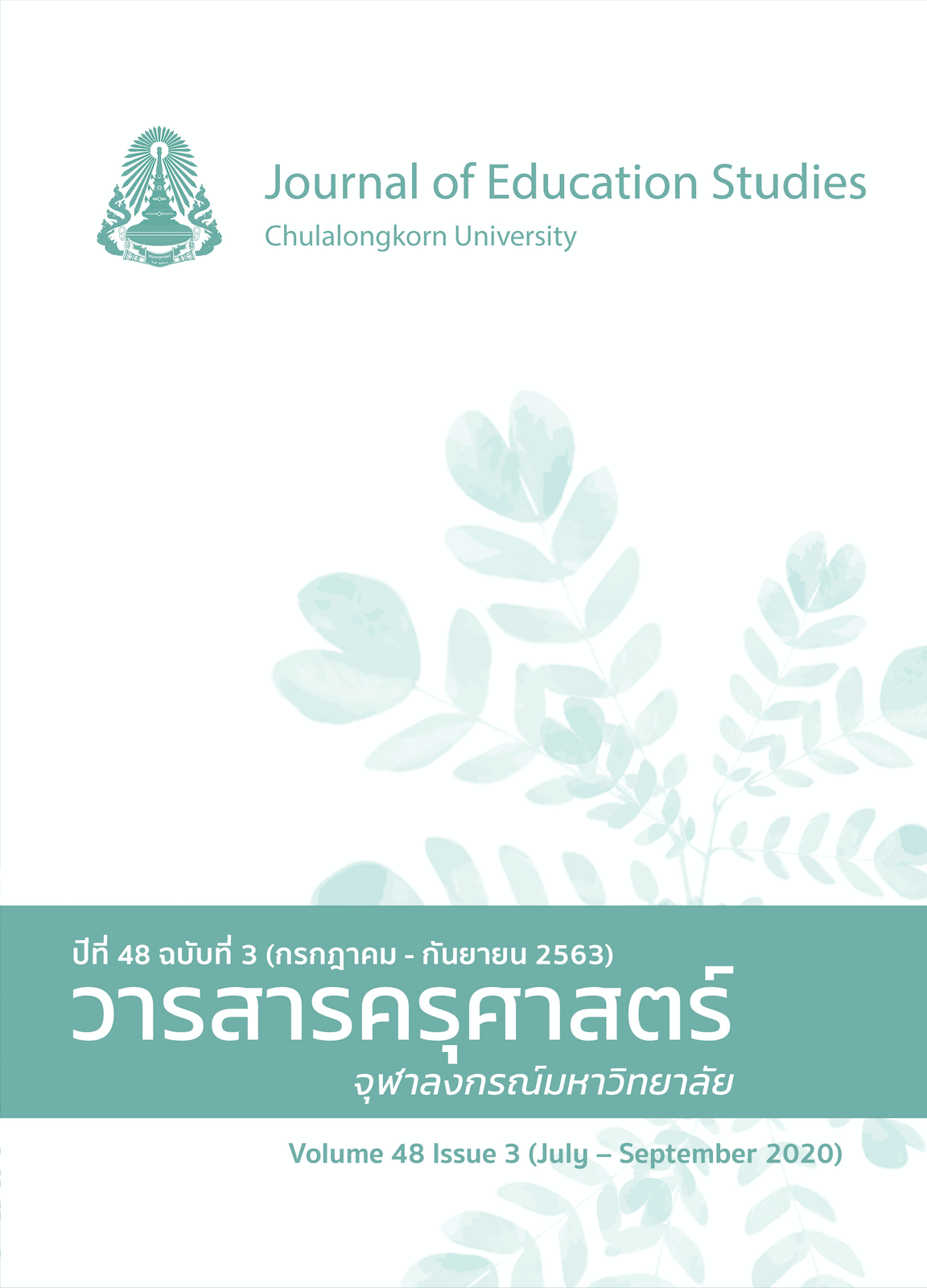Effects of Physical Activity Program based on Self-regulation Theory to Decrease Game Addiction Behaviors of Lower Secondary School Students
Keywords:
physical activity program, self-regulation theory, game addiction behavior, lower secondary school studentsAbstract
This study aimed to compare the means of game addiction scores before and after the experiment conducted on the experimental group and the control group, 2) the means of game addiction scores of the experimental group and the control group after the experiment, and 3) the means of game addiction scores from parents of the experimental group participants before and after the experiment. The participants included 50 students in grades 8-9 from Wattanothaipayap School, Chiang Mai Province. 25 of the students were assigned to the experimental group, while the remaining 25 formed the control group. The experiment lasted for six weeks in total. The research instruments included a game addiction evaluation form and the Physical Activity Program based on Self-Regulation Theory, which is designed to decrease game addiction among lower secondary school students. The data was analysed using mean, standard deviation, and t-test.
The results indicate that the mean of the game addiction scores of the experimental group after the experiment was significantly lower than before the experiment (p < 0.05), while the mean score of the control group after the experiment was not significantly different from before the experiment (p < 0.05). After the experiment, the mean of game addiction scores among the experimental group was found to be significantly lower compared to the control group (p < 0.05). Similarly, the mean of game addiction scores from parents of the participants in the experimental group decreased significantly after the experiment (p < 0.05).
References
กระทรวงศึกษาธิการ. (2551). หลักสูตรแกนกลางการศึกษาขั้นพื้นฐาน พุทธศักราช 2551. องค์กรรับส่งสินค้าและพัสดุภัณฑ์.
ชาญวิทย์ พรนภดล. (2547). โรคสมาธิสั้น. ใน วินัดดา ปิยะศิลป์ และ พนม เกตุมาน (บ.ก.), ตำราจิตเวชเด็กและวัยรุ่น. บียอนด์เอนเทอร์ไพรซ์.
เชษฐา เมี้ยนมนัส. (2553). การวิเคราะห์ปัญหาทางเทคโนโลยี่ที่มีผลกระทบต่อเด็กไทยจากการติดเกมส์ [วิทยานิพนธ์ศิลปศาสตรมหาบัณฑิต, มหาวิทยาลัยเชียงใหม่]. CMU Intellectual Repository. http://cmuir.cmu.ac.th/jspui/handle/6653943832/13444
นุจิอาภา ขจรบุญ. (2551). ผลของโปรแกรมการป้องกันปัญหาการติดเกมคอมพิวเตอร์โดยใช้วิธีการเรียนแบบร่วมมือแบบทีมสัมฤทธิ์ที่มีต่อนักเรียนประถมศึกษาปีที่ 5 [วิทยานิพนธ์ปริญญามหาบัณฑิต, จุฬาลงกรณ์มหาวิทยาลัย]. Chulalongkorn University Intellectual Repository. http://cuir.car.chula.ac.th/handle/123456789/33037
ประไพ ประดิษฐ์สุขถาวร. (2557). สอนลูกให้มีทักษะชีวิต (Life skill). Education.life skill. https://sites.google.com/site/educationpj/bthkhwam/sxnlukhimithaksachiwitlifeskills
ปัณณธร ชัชวรัตน์. (2552). ปัจจัยที่เกี่ยวข้องกับการติดเกมส์ของเยาวชนในเขตอำเภอเมืองจังหวัดพะเยา.วิทยาลัยพยาบาลบรมราชชนนี พะเยา.
วรารัตน์ ทรัพย์อิ่ม. (2552). ผลของการให้การศึกษาด้านโภชนาการสำหรับผู้ปกครองเด็กวัยอนุบาลที่มีน้ำหนักเกินเกณฑ์มาตรฐาน โดยใช้โมเดลปลาทู [วิทยานิพนธ์ครุศาสตร์มหาบัณฑิต, จุฬาลงกรณ์มหาวิทยาลัย]. ศูนย์บรรณสารสนเทศทางการศึกษา คณะครุศาสตร์ จุฬาลงกรณ์มหาวิทยาลัย. http://lib.edu.chula.ac.th/IWEBTEMP/25630910/1408175131436117.PDF
สำนักงานสถิติแห่งชาติ. (2552). ตัวชี้วัดสำคัญ ผลสำมะโน/สำรวจ ของสำนักงานสถิติแห่งชาติ พ.ศ. 2551. http://service.nso.go.th/nso/nsopublish/indicator/indSur51.pdf
สำนักงานสถิติแห่งชาติ. (2557). วิเคราะห์เด็กและเยาวชน พ.ศ. 2557. http://service.nso.go.th/nso/
nsopublish/pubs/e-book/e280958-1/files/assets/basic-html/index.html#1
ภาษาอังกฤษ
Bandura, A. (1997). Self–efficacy: The exercise of control. W.H. Freeman and Company.
Mclean, D. D., (2005). Kraus’ recreation and leisure in modern society. Jones and Barlet.




